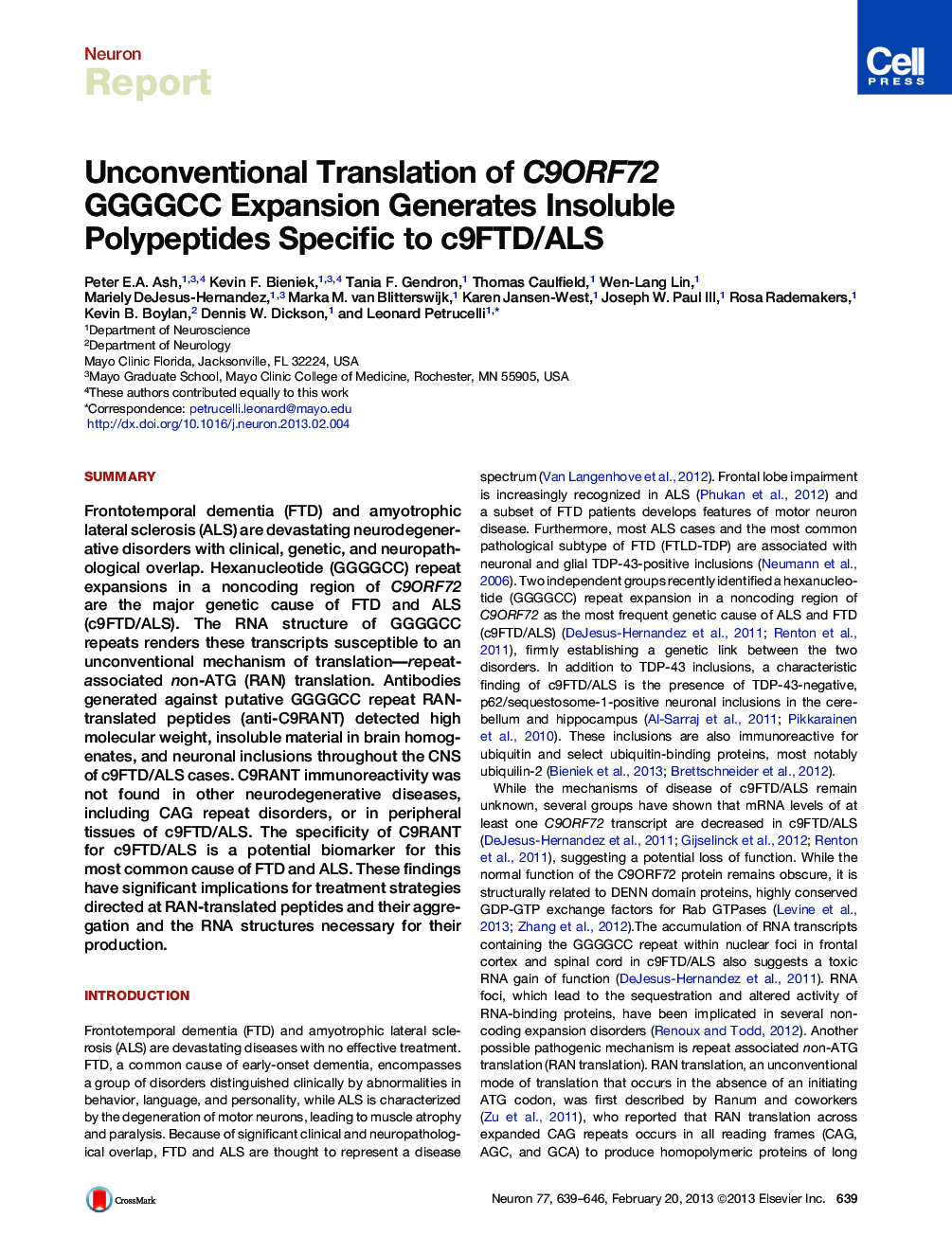| Article ID | Journal | Published Year | Pages | File Type |
|---|---|---|---|---|
| 4321360 | Neuron | 2013 | 8 Pages |
SummaryFrontotemporal dementia (FTD) and amyotrophic lateral sclerosis (ALS) are devastating neurodegenerative disorders with clinical, genetic, and neuropathological overlap. Hexanucleotide (GGGGCC) repeat expansions in a noncoding region of C9ORF72 are the major genetic cause of FTD and ALS (c9FTD/ALS). The RNA structure of GGGGCC repeats renders these transcripts susceptible to an unconventional mechanism of translation—repeat-associated non-ATG (RAN) translation. Antibodies generated against putative GGGGCC repeat RAN-translated peptides (anti-C9RANT) detected high molecular weight, insoluble material in brain homogenates, and neuronal inclusions throughout the CNS of c9FTD/ALS cases. C9RANT immunoreactivity was not found in other neurodegenerative diseases, including CAG repeat disorders, or in peripheral tissues of c9FTD/ALS. The specificity of C9RANT for c9FTD/ALS is a potential biomarker for this most common cause of FTD and ALS. These findings have significant implications for treatment strategies directed at RAN-translated peptides and their aggregation and the RNA structures necessary for their production.
► C9ORF72-expanded GGGGCC repeat RNA undergoes unconventional translation ► A C9ORF72 RAN translation product accumulates in insoluble inclusions in the brain ► Inclusions are specific to c9FTD/ALS and not in other neurodegenerative disorders ► C9ORF72 RAN translation peptides maybe a potential biomarker and therapeutic target
